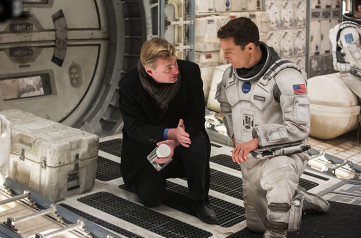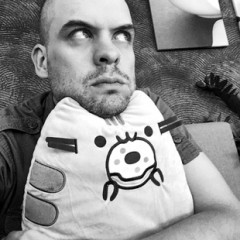What’s Next for VR?27.03.2020
After years of cyberpunk-infused visions and the and ill-timed shot at public adoption in the 1990s, virtual reality finally began making its way into homes worldwide around mid-past decade. What does its near future look like?
Twenty-five years ago, mass access to virtual reality seemed just around the corner. We’ve seen it in big-budget films (like Johnny Mnemonic and The Net) and cult anime (Ghost in the Shell), and some of us have even experienced it first-hand. The market saw the introduction of the first consumer headsets that allowed users to immerse themselves in computer-generated worlds. What this “mass” availability actually meant was that only a handful of locations actually carried the headsets, while video game journalists were offered access for testing purposes at industry trade shows. Personally, I never knew anyone who would have a kit at home. And let’s not kid ourselves—the VR experience at the time looked more like the Dire Straits’ Money for Nothing video than actual communion with the Matrix.
Helmets and Cardboard
Two decades later, nearly all of us carry powerful computers in our pockets, which we still—for some reason, probably some sort of nostalgia—continue to call “phones.” We’ve all become cyborgs so it’s only natural that we finally see the mass implementation of VR. The relatively high resolution of smartphone screens led to the development of Google Cardboard, a makeshift cardboard headset fitted with two lens and a phone mount, which allowed its users to view 360-degree films, music videos, and simple 3D games. It was cheap (so cheap in fact that it was often handed out by advertisers or sold for 10 PLN in variety stores), but rather uncomfortable to wear for longer periods. Supermarkets began carrying cheap plastic headsets based on the same principle. High-end users, meanwhile, could choose from a number of prosumer solutions powered by high-grade PC rigs, like Oculus Rift or HTC Vive. Sony, finally, found a more affordable solution with the PSVR kit working with its Playstation 4 console. Since its release in 2016, Sony has managed to sell over five million PSVR units.
Even classics like Tetris become a radically different experience in VR, immersing the player in its abstract, digital world.
Are those numbers strong? Hardly, given that Playstation 4 itself sold over 109 million units. And the number of games in the average library that make use of the capabilities offered by the Sony kit is still very low. Not that there aren’t some stellar VR titles available, like the Polish-made Bound or Paper Beast, the latest title from the creator of the legendary Another World. Even classics like Tetris become a radically different experience in VR, immersing the player in its abstract, digital world. It is possible that PSVR will become a much more appealing proposition following the upcoming release of PS5, which will still be compatible with the kit, or that Sony is planning to update it in the near future, especially given the fact that the competition has not been slacking. The market has since seen the release of Oculus Quest, which, in contrast to the Sony headset, does not constrain user movement with wires and cables. Quest is also capable of running the latest VR titles, including Half-Life: Alyx, the virtual reality-based spin-off of the cult scifi shooter franchise. Will the release of long-awaited video game titles impact VR headset sales? Time till tell—as of today, data collected by Steam indicates, less than 1% of PC user surveyed have a VR headset.
Conferences and Maps
Despite the low adoption, Mark Zuckerberg, the founder of Facebook and current owner of Oculus, sees nothing but bright skies ahead for VR. In his customary New Year’s Facebook post, Zuckerberg wrote: “Augmented and virtual reality are about delivering a sense of presence—the feeling that you’re right there with another person or in another place. Instead of having devices that take us away from the people around us, the next platform will help us be more present with each other and will help the technology get out of the way. Even though some of the early devices seem clunky, I think these will be the most human and social technology platforms anyone has built yet.” Zuckerberg touched upon a key matter here—isolation. In the long run, the experience of VR gaming is deeply alienating, as the headsets shut us off from external visual and auditory stimuli and replaces them with artificially generated experiences. Even an “ordinary” video game can be so engaging as to make us forget about the real world—but augmented with VR, the detachment becomes complete, with even time flowing at a different rate.
Second Life or Playstation Home rendered user avatars and the virtual worlds they roamed on plain old displays or TVs. Horizon, on the other hand, will allow a fully immersive experience of the virtual world and its denizens.
In my view, it’s AR, or augmented reality, that has the most promising future—rather than replace the real world, the technology provides an overlay for it. The experience itself is already available for some smartphones—the IKEA app allows users to place virtual furniture in real interiors viewed through the camera lens, others let us chase Pokémon or creatures from the Harry Potter franchise around our neighborhoods. In-app face filters or masks allow us to transmute our appearance, while Google Maps is capable of overlaying directions to your destination on real-life streets, just like in a video game where a pointer tells you which streets to take. Zuckerberg is most definitely aware of this trend, even though most of his previous presentations featured more classic takes on VR; Apple, long-rumored to be working on its own AR headset (an avenue explored in the past, somewhat prematurely, by Google Glasses), must also be keenly following the landscape. Both companies have recently been shipping products that make it easier to create AR content. Further proof of the pivot away from media “taking us away from others” in favor of those that “open us to each other” can be seen in the growing popularity of vertical video, expected to be consumed on smaller smartphone screens rather than on huge TVs blocking our view of the world.
Virtual scenarios
One of the most classic VR implementations can be found in Zuckerberg’s Facebook Horizon, which sought to use VR to build a massive online world we’ve seen multiple times in sci-fi literature and film (Snow Crash, Ready Player One). Earlier iterations of that idea included Second Life or Playstation Home—but both of them rendered user avatars and the virtual worlds they roamed on plain old displays or TVs. Horizon, on the other hand, will allow a fully immersive experience of the virtual world and its denizens.
Another incredibly massively multiplayer VR platform, VRChat, offers users the possibility to craft avatars resembling video game characters or anime girls. While appealing to nerds and otaku, will it find traction with the average user? Just look at the film that Facebook showed during its Horizon presentation—a married couple is going about their day in the kitchen of their house, but the woman is wearing a VR headset and holding hand controllers, which effectively shut her off from the reality around her. There doesn’t seem to be any space left there for interaction with the rest of the family; on the contrary, straddling the two realities is an unpleasant experience. The wildly popular video game Animal Crossing (the latest iteration of which, released for Nintendo Switch, sold two million copies in three days in Japan alone) illustrates yet another aspect of the issue. In the game, players spend their lives in a world inhabited by cute animals—furnishing their homes, fishing, and picking flowers. Fans of the game love watching their avatars, dress them in new virtual clothes, design original outfits—and the first-person view offered by VR headsets won’t be able to deliver that sort of experience.
So maybe we owe ought to be a little more appreciative of Zuckerberg’s efforts (although I’m afraid that after privatizing our friendships and memories, he’ll simply move on to reality itself)?
We might also be in for a deeper change, given the strange, uncertain times we live in. In her essay on the pandemic, “The Price of the New Normal,” director and VR artist Ana Brzezińska argues that due to the “sense of presence and the experience of genuine interaction” it offers, virtual reality might be our only recourse “should self-isolation and social distancing measures be upheld for the foreseeable future.” Brzezińska also points out the many professional applications of virtual and mixed reality, most of which can help us survive these trying times. What we still sorely lack, however, is a comprehensive social and political vision for the technology.
So maybe we owe ought to be a little more appreciative of Zuckerberg’s efforts (although I’m afraid that after privatizing our friendships and memories, he’ll simply move on to reality itself)? From the consumer or home user standpoint, poor hardware and software availability is still the key pain point preventing broader adoption. Even though I own a PSVR kit, I had to go to a cinema to see the VR version of Ghost in the Shell, where it was screened using inferior Samsung hardware. Why? Because it hasn’t yet been released for the Sony console. Alas, the harsh realities of the non-real.
see also
- Hiplet, or When Ballet Meets Hip-Hop. See the Music Video-Like Short Documentary Screened at SXSW
News
Hiplet, or When Ballet Meets Hip-Hop. See the Music Video-Like Short Documentary Screened at SXSW
- Netflix to Explore the Future of Dating in a French Black Mirror-esque Series
News
Netflix to Explore the Future of Dating in a French Black Mirror-esque Series
- Do Nolan Films Have a Sound Mixing Problem? Director Addresses Complaints

News
Do Nolan Films Have a Sound Mixing Problem? Director Addresses Complaints
- 5 Microbudget Music Videos That Made a Big Splash Papaya Young Directors
Opinions
5 Microbudget Music Videos That Made a Big Splash
discover playlists
-
PYD: Music Stories
 07
07PYD: Music Stories
-
Walker Dialogues and Film Retrospectives: The First Thirty Years
 12
12Walker Dialogues and Film Retrospectives: The First Thirty Years
-
Papaya Films Presents Stories
 03
03Papaya Films Presents Stories
-
Branded Stories PYD 2020
 03
03Branded Stories PYD 2020
